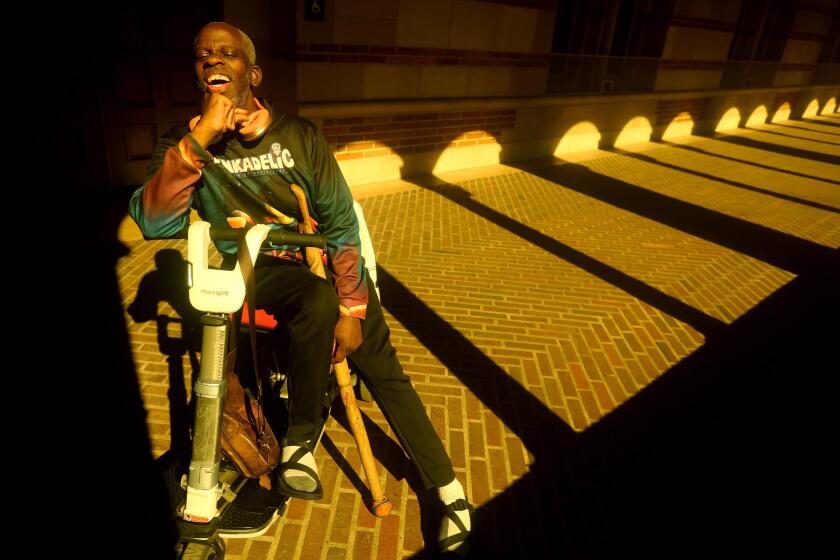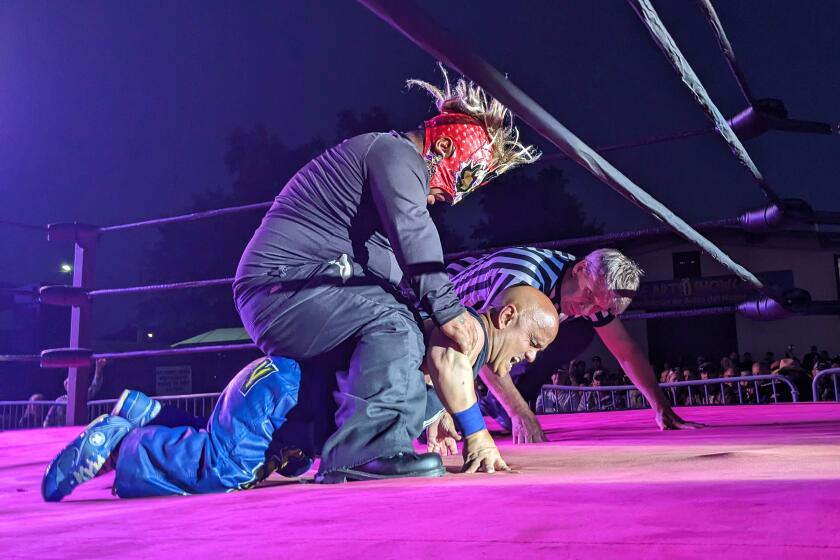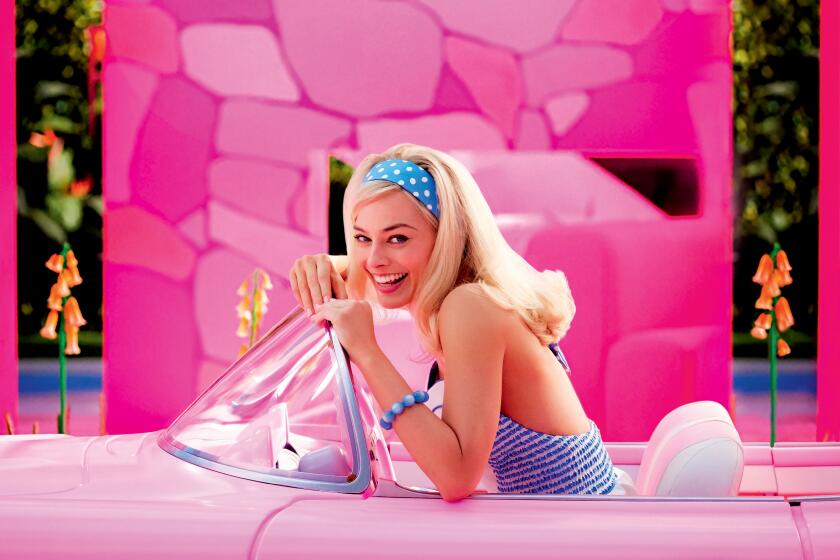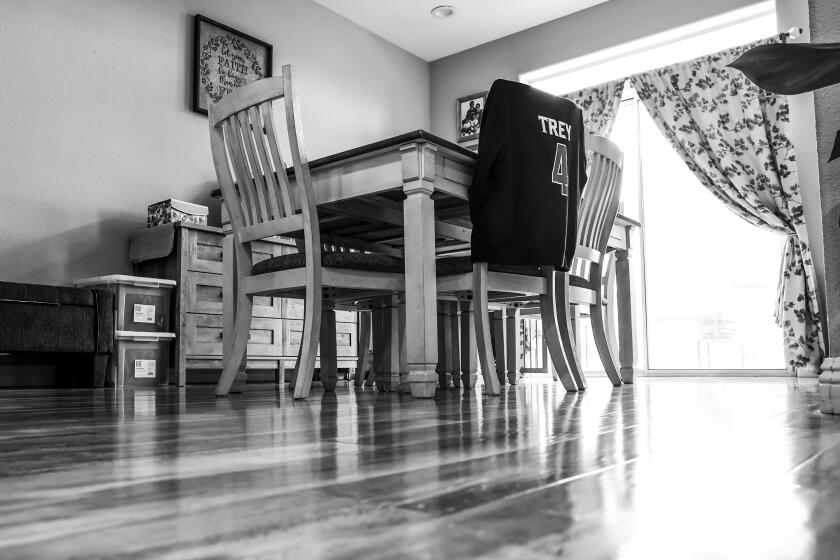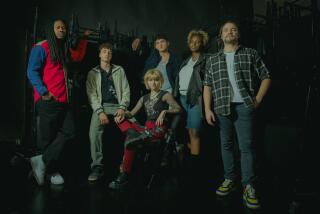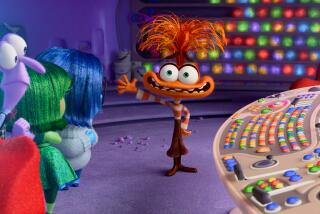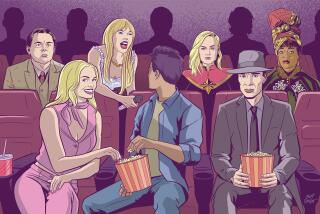Captions took over TV. Why can’t they win the silver screen?
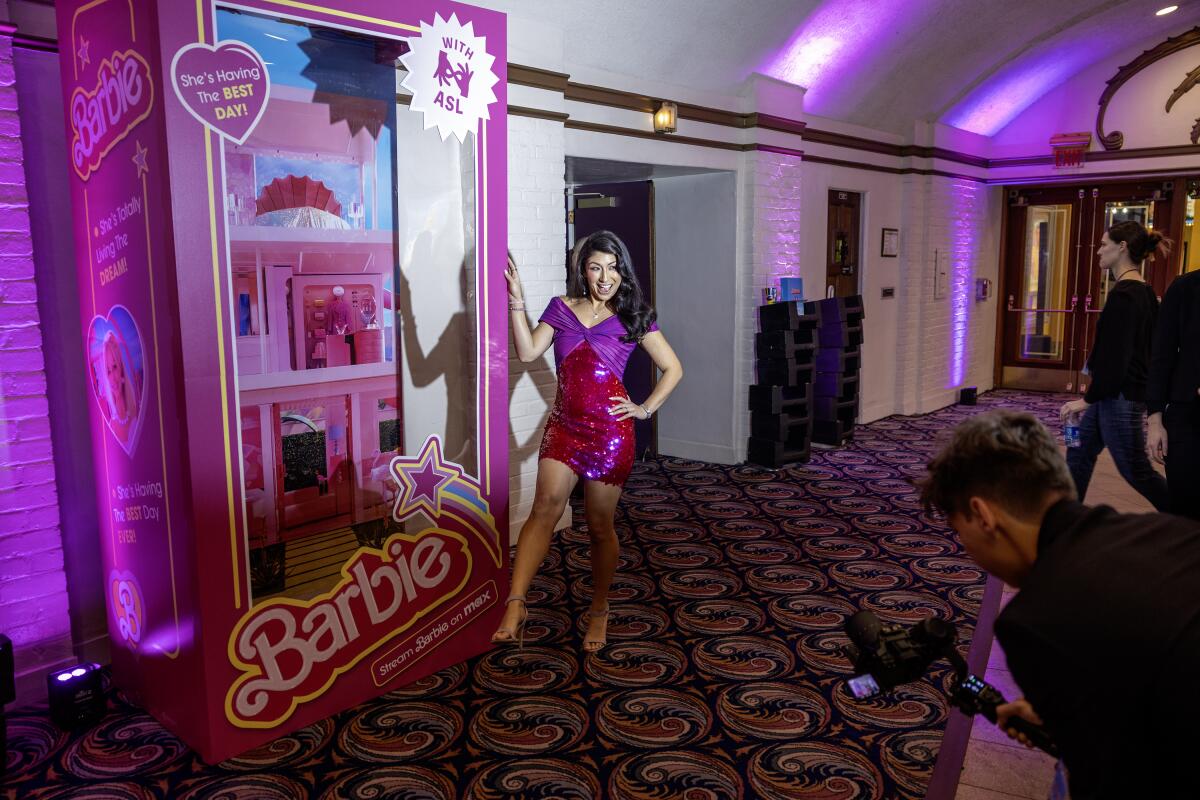
Nine-year-old actor Oceana Matsumoto signed emphatically to her father, posing for a snapshot in the lobby of Westwood’s Regency Village Theater, where hundreds of fans had come to catch a special screening of “Barbie” in ASL — American Sign Language.
The Dec. 14 event, which debuted Deaf performer Leila Hanaumi’s interpretation of the bubblegum blockbuster, showcased the cutting edge of accessibility for the Deaf, with the dialogue relayed to viewers through both on-screen captions and sign language.
“It feels good,” Oceana said. “They typically don’t even have captions [in theaters].”
Though common at news conferences and concerts, ASL is rare in theaters and on streaming services, where the sign language interpreter can be included within the picture. Captions, by contrast, are old school — an accessibility function that first hit the movies in the Eisenhower era.
In recent years there’s been a twist: Words on the screen have become the default for many television viewers.
According to recent studies, roughly half of all viewers use captions most or all of the time, including 53% of millennials and some 70% of zoomers. That’s about double the percentage of Gen Xers and baby boomers who use them, despite the fact older people are between two and three times more likely to have difficulty hearing, according to CDC data.
The state’s universities, despite being leaders in the field, have struggled to institutionalize disability scholarship and to hire disabled faculty to teach it.
“Captioning is not only for Deaf people, it’s for everyone — and I mean literally everyone,” said Katherine Lees, chief executive of the accessible marketing company Dozanü Innovations.
Some reasons are technical: Flatter TV sets, newer sound mixing trends, inconsistent audio levels and compressed quality on streaming can muddy dialogue, while modern interfaces make adding captions almost as easy as skipping through the opening credits.
Others are social: More second-screen viewing (watching your TV while simultaneously scrolling on your smartphone), a growing appetite for foreign shows, and the proliferation of auto-generated captions on TikTok and YouTube have all helped popularize the once-niche technology — particularly among younger viewers.
“Having captions on video content is fast becoming the new standard,” said Melissa “echo” Greenlee, founder of Deaf Friendly Consulting.
As moviegoers jammed back into theaters this summer, many found themselves wondering — why aren’t there captions here too?
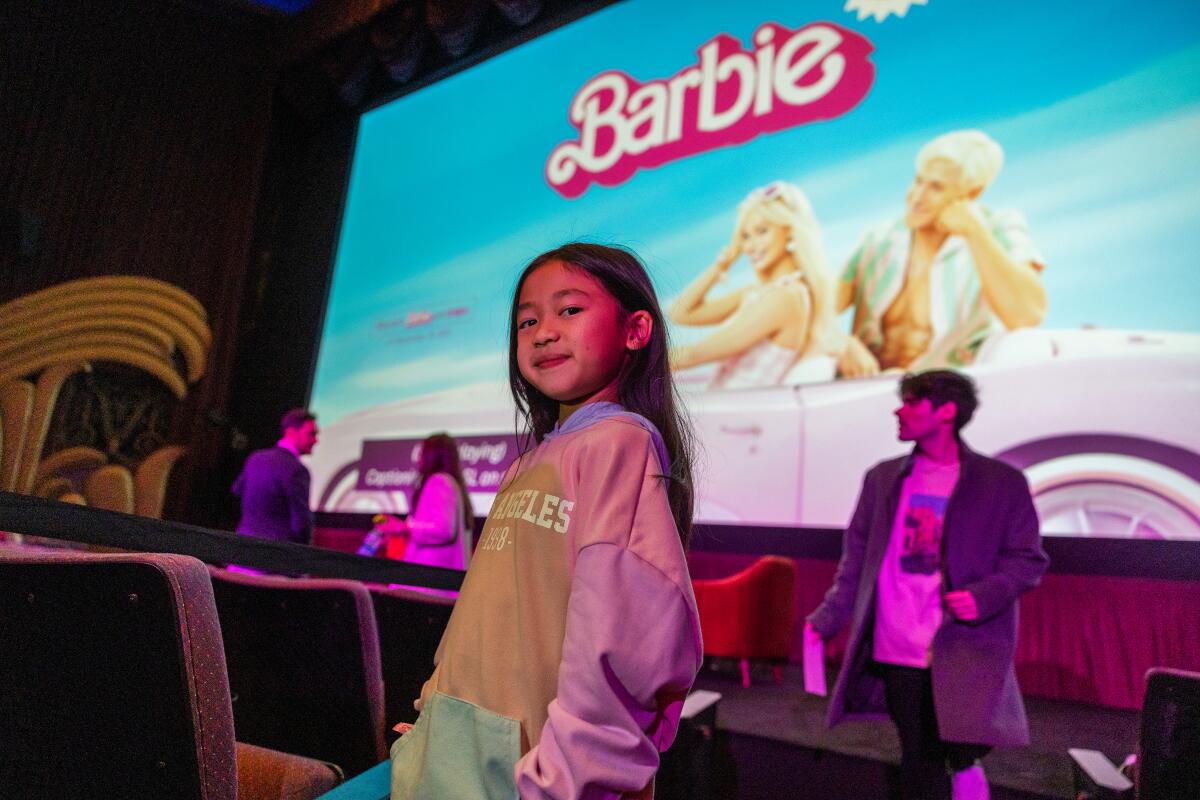
In the case of the “Barbie” screening, the ASL interpretation offered viewers another comedic layer in the repetition of the icon’s ASL moniker: the hand-sign for B combined with the sign for doll, which runs down the bridge of the nose.
“I literally interpret movies for my kids in our living room,” Hanaumi told Barbie star Margot Robbie at a post-screening Q&A. “Deaf people do that every day.”
Captioned films were originally produced to be loaned out to Deaf groups through a government-funded program. In the ‘70s, networks pioneered closed captions for TV. And following the passage of the Americans with Disabilities Act and the Television Decoder Circuitry Act of 1990, all new TV sets were required to be able to display captions.
But a curious thing happened in the decade since streamers made captions universal, following the 2011 judgment in Netflix vs. National Assn. of the Deaf: As they became widely available, the masses started using them.
“With my generation, Gen Z, we’re already watching everything with captions,” said Deaf influencer Chrissy Marshall, 24.
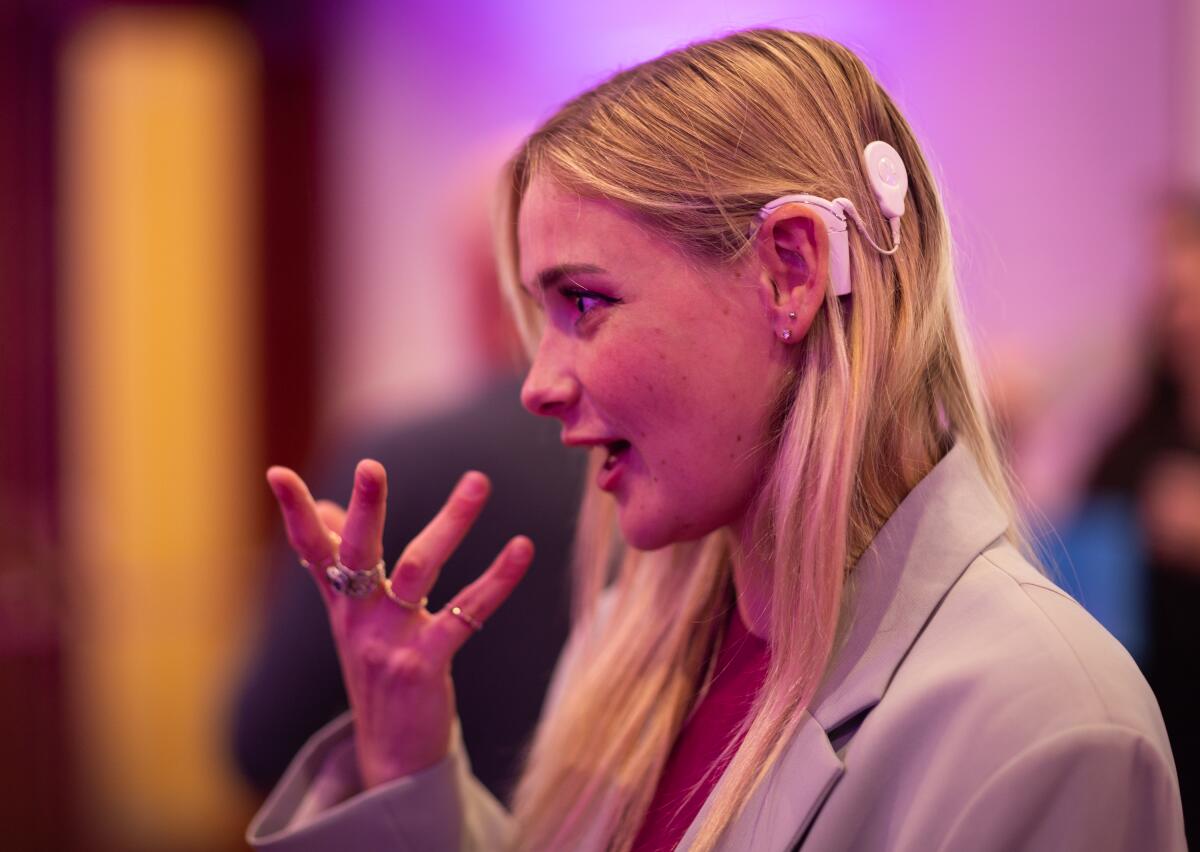
Howard A. Rosenblum — head of the National Assn. of the Deaf, whose lawsuit paved the way for the current caption renaissance — said that “theater owners have long argued that open captioning is disruptive.” But now, “with so many people who are not deaf turning on captions ... it would seem [they] are welcome.”
The term “open captions” refers to dialogue and audio description projected like subtitles on the screen. They’re the preferred alternative to closed captions, which all theaters must provide by law, and which moviegoers access using special glasses or a cup holder-mounted machine.
But getting open captions in theaters is far more complicated than toggling between menu options on a smart TV, advocates say.
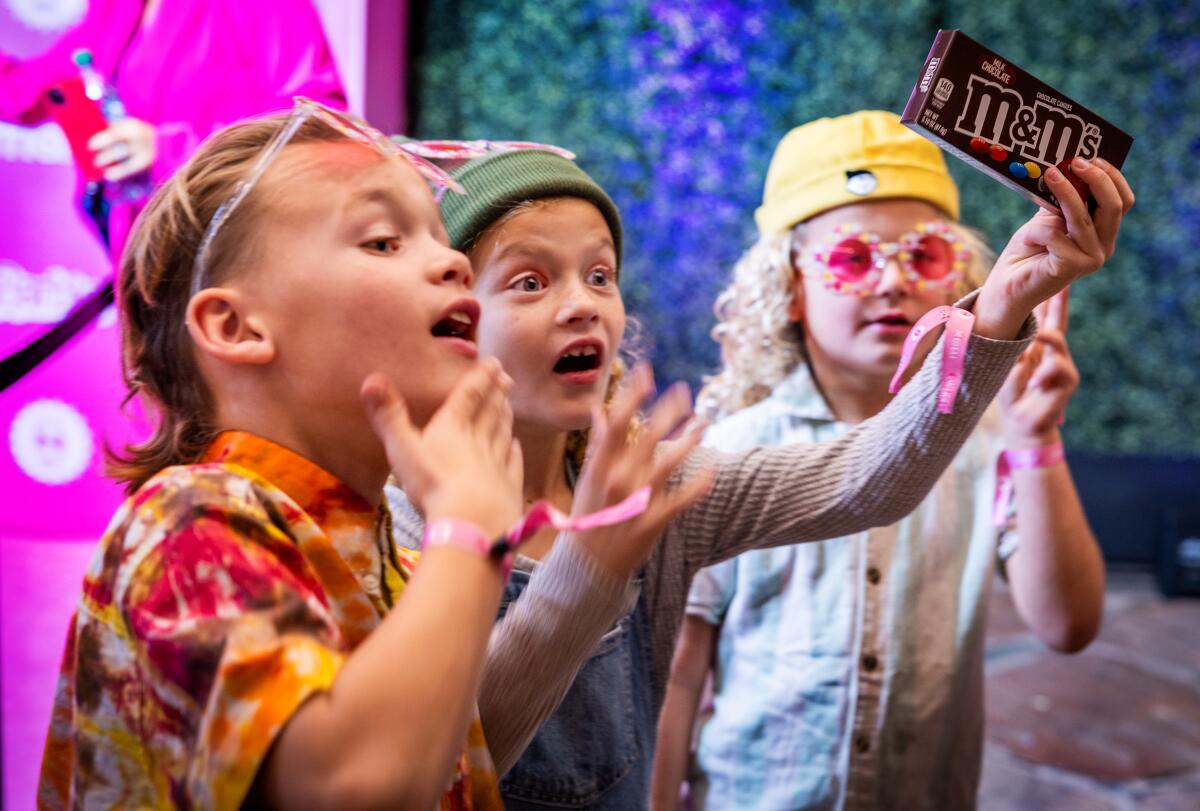
Hawaii has mandated open-caption screenings in theaters since 2015. But showings in the other 49 states remained rare.
Then, a few months after most movie theaters reopened in 2021 amid the COVID-19 pandemic, the country’s largest cinema chain — AMC — announced it would begin screening new releases with open captions at limited showings in 240 of its U.S. theaters.
In 2022, New York City began requiring up to four open caption showings per movie per week at most theaters, with the stipulation that half be during peak hours.
Washington, D.C., and Colorado have proposed similar laws.
Critics say midget wrestling is an exploitative and dangerous spectacle that fuels public harassment and glorifies a derogatory slur. Promoters say, who cares?
The National Assn. of Theater Owners, a national industry group, did not respond to requests for comment. Nor did AMC, still the only major theater company to regularly offer open-caption showtimes where such screenings are not mandated by law.
Although it does not mandate them, California now has scores of theaters with regular open-caption showings, including in smaller cities such as Placerville.
“I live in Northern California, and we have monthly Deaf events with open-caption films,” Oceana said. “We don’t have to use the glasses or the little machines you put on your seat. We’re able to just watch it.”
Angelenos can find about a dozen open-caption showtimes a week, if they know where to look.
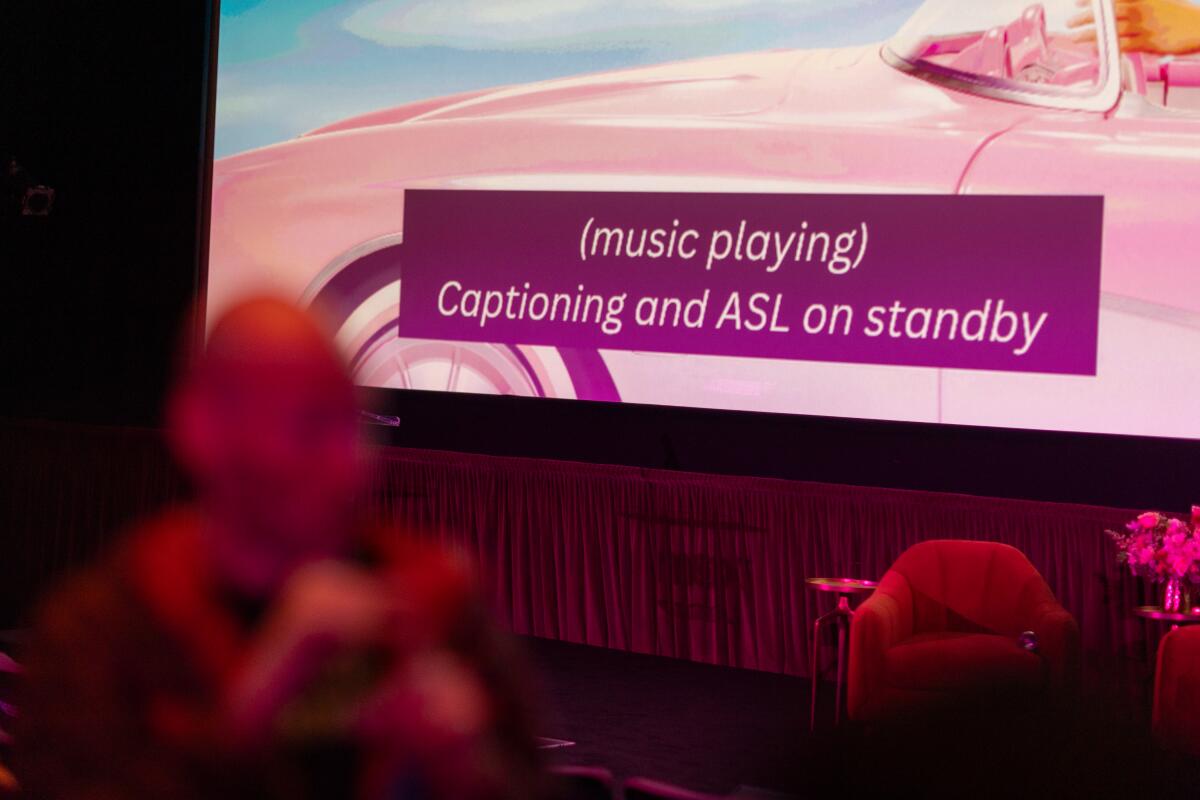
But moviegoers say there’s no easy way to keep track of what’s showing and when — and schlepping across town for a 1 p.m. weekday showing hardly justifies the $23 ticket price.
“You can’t schedule the open-caption slot at a lousy time, not promote it and then complain community members aren’t coming,” Greenlee said. “To not give us options during prime-time weekends … is like saying: ‘You don’t matter.’”
Even small and independent theaters that strive to be inclusive and promote their accessible showings may not always hit the mark.
For every well-attended screening of “Barbie,” there’s a flip side, like “Wish.”
About 100 people showed up to the film’s open-caption debut at Disney’s El Capitan Theater in December — one of two such screenings the Hollywood movie house provides for new releases.
But the encore, at 4 p.m. the following Wednesday, was empty.
“We want to be as inclusive as we can be and invite audiences to come be comfortable and be their true authentic selves,” said theater manager Adi Hakopian. “We have closed-caption devices too, but it’s not as comfortable as when it’s on the screen.”
The two sides of “Barbie”: A vivid story about the social pressures on women, men and children; and the playful pink product marketing campaign.
Buggy cup-holder caption machines and ill-fitting glasses have long been the standard in movie theaters, which are required to provide captioning and audio description devices to moviegoers who need them. But users say those technologies are uncomfortable and unreliable, and many theaters only stock a few.
“You’re looking up and down and up and down and up and down through the whole movie,” said Deaf moviegoer Dani Duran. “If the captioning goes off in the middle of the movie, it’s sorry, too bad, and we’ve missed 20 or 30 minutes of the movie” before it can be fixed.
That’s what happened when she and her husband went out for a date in September.
“His [device] had glitches,” she said. “He had to take it back and exchange it, he missed the whole first part of the movie, and then it stopped again. They gave us a refund for the tickets, but we’d already bought popcorn and drinks, the whole nine yards.”
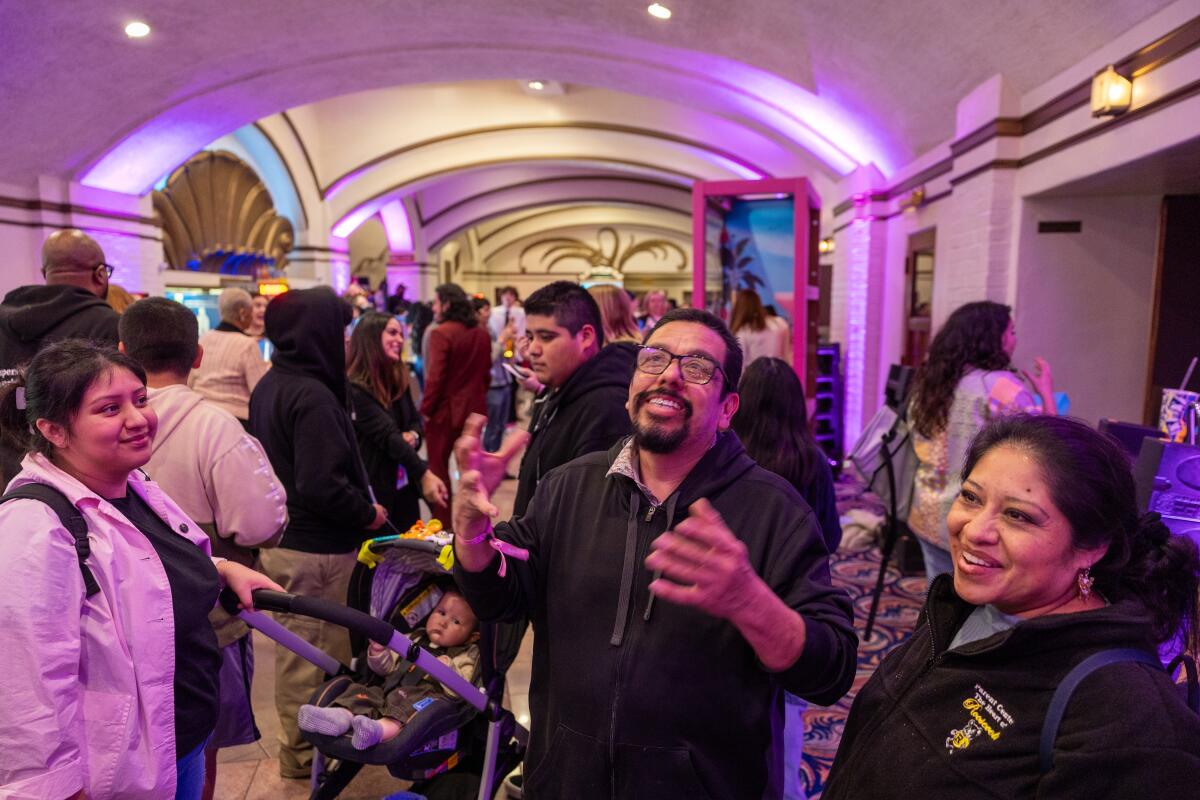
For now, open-caption movies feel equally inaccessible, even if they’re easier to watch.
“If they say, we have open-captioning [only] this Friday, that makes it difficult to go,” Duran said. “Some of the theaters are so far away for me, it’s easier to wait” for movies to come out on streaming.
Both the “Barbie” screening and the ASL interpretation were paid for by Max (formerly HBO Max), which said it aimed to provide representation, not just accessibility. Hanaumi touched on the growing push for inclusion in her conversation with Robbie.
For adolescents, suicide prevention often starts with other teens. That’s what drew Donald “Trey” Brown III to Teen Line, where he was training before his suicide.
“I’m wondering where you see the industry going with accessibility and inclusivity,” Hanaumi asked.
“I only see it getting better,” Robbie said. “Technology is only making things easier to be more inclusive, and we should all be capitalizing on that.”
There was a pause. Then, as though remembering her audience, the actress amended herself.
“But it’s not really down to technology,” Robbie went on. “It’s down to people.”
A thousand hands shot into the air in a silent wave of applause.
More to Read
Sign up for Essential California
The most important California stories and recommendations in your inbox every morning.
You may occasionally receive promotional content from the Los Angeles Times.

